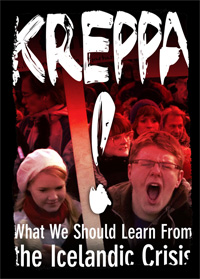
What happened in Iceland in October 2008 has no parallel in history. The Icelandic economy crashed, following the collapse of the country's main banks. This led to Kreppa, Icelandic for crisis. The plunge was preceded by ten years of miraculous growth during which it seemed everyone would come out as a winner.
Rapid business expansion can be a means for a nation to improve its image, enhance the living standards of its citizens and increase the tax revenue of the state. If pursued wisely, this strategy can be very successful. On the other hand, for small countries one mistake can be disastrous.
Iceland chose rapid international expansion in the financial markets as a national strategy. Influential Icelanders worked together with the aim of making the country richer and more influential. The press seldom questioned this risky strategy. The living standards of the citizens rose for a long time, which resulted in popular support. The government and the central bank felt all the time they were in total control of the situation. Nobody was supposed to criticize the chosen path to rapid growth and international success.
 This strategy failed revealing the shortcomings of the financial supervisory system and the risks of a national consensus nobody dares to question. Finnish think tank e2 has together with Magma and some other institutions published a report on the lessons that can be learned from these events. It is important to prevent similar crises from occurring in the future, in Iceland and other parts of the world.
This strategy failed revealing the shortcomings of the financial supervisory system and the risks of a national consensus nobody dares to question. Finnish think tank e2 has together with Magma and some other institutions published a report on the lessons that can be learned from these events. It is important to prevent similar crises from occurring in the future, in Iceland and other parts of the world.
Kreppa - What We Should Learn from the Icelandic Crisis presents the reasons behind the crisis, analyses the lessons and looks at Iceland's long-term policy options.
The authors of the report represent a variety of nationalities and backgrounds.








